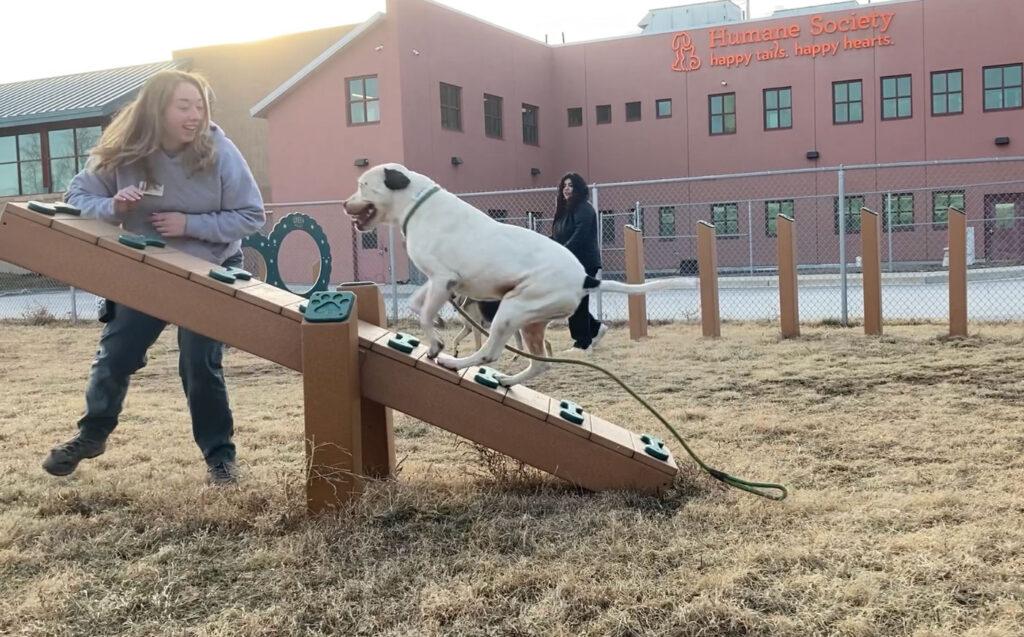
You can teach an old dog new tricks! There is no better time than right now to start working on training with your dog, no matter their age. So grab those tasty treats and get ready to help your pup reach their full paw-tential!
Benefits
Dog training is a core foundation of building trust with your dog to live a happy life in your family. The benefits of training your dog are nearly endless: it builds your dog’s confidence, provides mental stimulation, gets their energy out, and helps strengthen the bond between you and your dog.
Have you ever wished that you and your dog could speak to each other? Well, training is the best way to learn how to communicate with your dog after creating a mutual understanding. Training provides dogs with the basic manners we all want, from a polite greeting when guests arrive, to walking nicely on the leash, and returning to you when called.
Training also builds happy and healthy dogs, plus it’s fun!
Training Tips
Who said that old dogs can’t learn new tricks? No matter the age of the dog you just brought home, they are ready to start their training journey.
Each dog is unique in their ability to learn, what motivates them, and how they respond to new challenges, just like people. However, every dog will benefit from learning what is desired of them through positive reinforcement training. This training technique uses a reward for desired behaviors. You can praise your dog or reward them with tasty treats or their favorite toy to make learning fun! Since the reward makes them more likely to repeat the behavior, positive reinforcement is one of your most powerful tools for shaping or changing your dog’s behavior.
- Timing is important: Reward your dog immediately after they perform the desired behavior, or your dog may not associate it with the proper action. For example, reward your dog as soon as they sit, or they might think they were rewarding for standing back up.
- Keep it short: Dogs learn from our body language and short verbal commands. Keep verbal cues short and uncomplicated like sit, stay, shake, down, come, and heel.
- Consistency is key: Everyone in your house should use the same cues or your dog may get confused. Consistency with positive reinforcement training also means always rewarding the desired behavior and never rewarding undesired behavior.
Dog Trainers
Finding a good dog trainer or behavior consultant is more difficult than you might think. Seek out trainers and behavior consultants who have gained credentialing or schooling through educational institutions rooted in humane, reward-based methods. Click here for more information on professional pet training and how to sniff out the right trainer near you.







